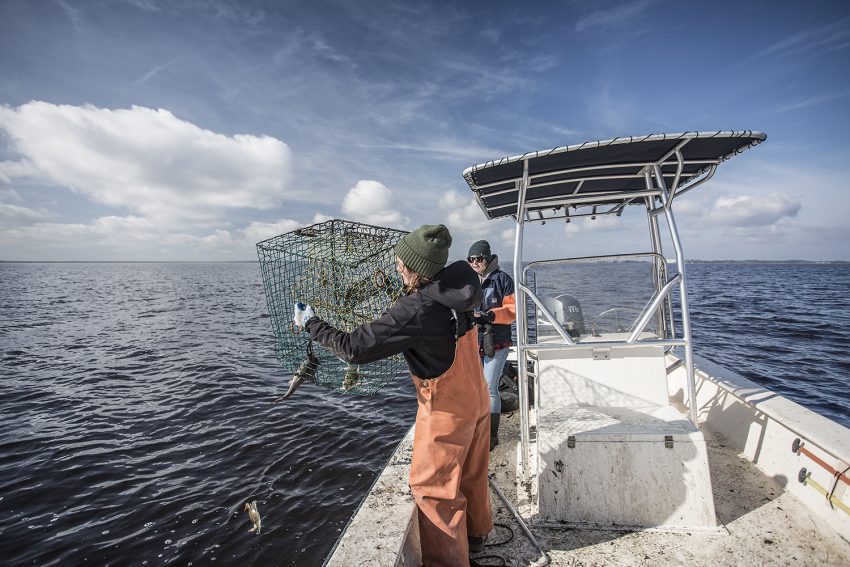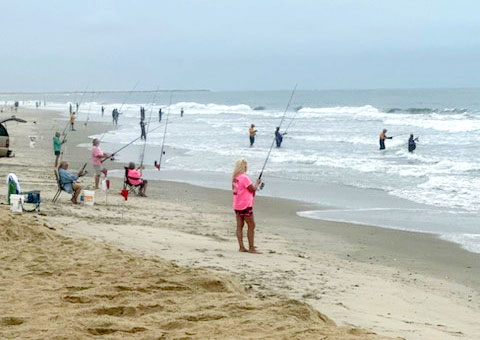NOAA considering new regulations for bluefin tuna quotas and share allocation
While an international panel is studying revisions of stock quotas of bluefin tuna, the federal agency that divvies up the U.S. share will consider new regulations that address allocation share along the East Coast, a long-standing bone of contention between New England and Southeast watermen.
A draft amendment to the Highly Migratory Species Management Plan will include a discussion of quota management in the general category, said Brad McHale, fisheries management specialist for NOAA Fisheries Service.
“I think that’s where a lot of conversation will take place,” he said.
McHale said that the proposal, Amendment 7, is focused primarily on bluefin tuna, a species whose management has not been updated since 2006.
The International Commission for the Conservation of Tunas, the regulatory body that sets the total allowable catch for bluefin tuna, met June 26-28 in Montreal to review stock assessments for the fish.
But McHale said the new international assessment is not scheduled to be released until 2015. Whatever allocation ICCAT sets is distributed by the National Marine Fisheries Service among domestic bluefin tuna fisheries.
On June 18, the agency announced the final quota for 2013 that adjusted the annual U.S. baseline assigned by ICCAT to account for under harvest of the adjusted 2012 quota. The longline category was also closed for the remainder of year.
For Outer Banks watermen, the issue is not so much the amount of quota allocated by ICCAT than the way it is allocated by the Fisheries Service, said Charley Pereira, the president of the Southeastern Bluefin Tuna Association.
Pereira, formerly with the Winter Bluefin Tuna Association, said that North Carolina and other Southern coastal states are given just 10.4 percent of the Western Atlantic bluefin tuna catch.
“Our primary goal is to get more of a percentage of it,” he said. “We had zero dedicated bluefin quota south of New York until the early 2000s. They’re in our waters about 30 to 40 percent of the time, yet we only get a little more than 10 percent.”
Bluefin typically arrive off the North Carolina coast after Thanksgiving, with the best fishing in late January into February. But until Marine Fisheries in 2011 allocated a reserve quota for December and January, most of the quota would be gone by the time the fish reached the southern coast.
Pereira said that the problem is that the quota in the winter season, which was extended to March 31, is fished in a matter of weeks. He said he believes that in the interest of fairness, bluefin tuna should be managed as a 12-month fishery, which would even out the distribution the northern fishermen are allocated.
“They always get more than we do, no matter what it is,” he said.
Populations of bluefin tuna are managed separately between the Eastern Atlantic, the Mediterranean, and the Western Atlantic. The Western Atlantic bluefin spawn in the Gulf of Mexico and migrate up the East Coast to Canada.
For reasons that are not fully understood, since 2004 U.S. fishermen have been hooking tons less of the Western Atlantic stock than the amount allocated by ICCAT, although some biologists has hypothesized that it was related to overfishing in the Eastern and Mediterranean regions.
Management of bluefin populations remains a contentious issue in the international scientific community, which disagrees on baselines for stock assessment and even the extent of population depletion.
Until Stanford University started a tag-and-release program off Hatteras in 1996, little was known about the giant fish, which can weigh up to 1,800 pounds. Since then, scientists have learned that the bluefin is an amazing swimmer that can cross great distances, complicating the management of the population categories because of their ability to mingle.
Although it has been popular for fishermen to snap a shot of them holding the tuna, Pereira said that it is against the law to remove a catch-and-release bluefin tuna from the water, even to just take a photograph.
Fishing for bluefin off Hatteras and further south is not what is was in the late 1990s and early 2000s, when fishermen caught thousands of fish weighing in excess of 300 pounds and worth as much as $40,000. After a lull, fishing for the lucrative giants has bounced back in recent years. Pereira said that fish weighing about 800 pounds have been caught off boats out of Oregon Inlet.
Ideally, a fisherman should hold a charter captain’s license that permits fishing both recreational and commercial quota, Pereira said.
“Quota means tons of fish,” he said. “Permit means what tons of fish you’re allowed to fish for.”
More than 80 percent of the world market for bluefin is sold in Japan, where a 489-pound tuna sold in January for a record-breaking $1.76 million – about $3,600 a pound.
Although the fish is one of the more valuable available to American fishermen, such inflated prices are dismissed as marketing ploys.
On a more local level, NOAA Fisheries is looking to the draft amendment to address bluefin issues including overfishing, the need to rebuild the stock, and the difficult challenge of dead discards in the longline fishery.
Incidental catch of bluefin in pelagic longline fishing has become an increasing issue. The amount of dead discards of bluefin tuna in 2012 – which became available in May was about 93 metric tons more than had been estimated, based on a proxy number from the amount of 2011 dead discards.
McHale said that the longline vessels must account for the discards, but fishermen using hand gear like rod and reel are not required to report what they don’t keep. Some remedies, such as requiring logbooks on certain vessels or at certain times of the year, have been considered, as well as increased monitoring or improvements in longline gear, but McHale said that input from fishermen is crucial to determine the best solution and fishing practices.
“What we are looking to do from a conceptual point of view is increase individual accountability,” he said. “Some have shown they can avoid bluefin and some do not.”
Other issues that will be covered in the amendment, according to a NOAA Fisheries announcement last month, will be revisiting quota allocations; additions and modifications of time/area closures or gear restrictions; and improvements in reporting and monitoring.
The draft amendment, which will include an Environmental Impact Statement and preferred alternatives, is expected to be published by late July or early August. McHale said that it will be followed by a 60- to 90-day comment period. A public meeting will also be held, most likely in Manteo. The amendment is expected to be implemented in 2014.
FOR MORE INFORMATION
For more information on a draft amendment to the NOAA Fisheries Service Highly Migratory Species Management Plan, go to
https://hmspermits.noaa.gov/news.asp and http://www.nmfs.noaa.gov/sfa/hms/newslist/2013/06-18-13_bft_final_2013_quotas_and_longline_closure.pdf







